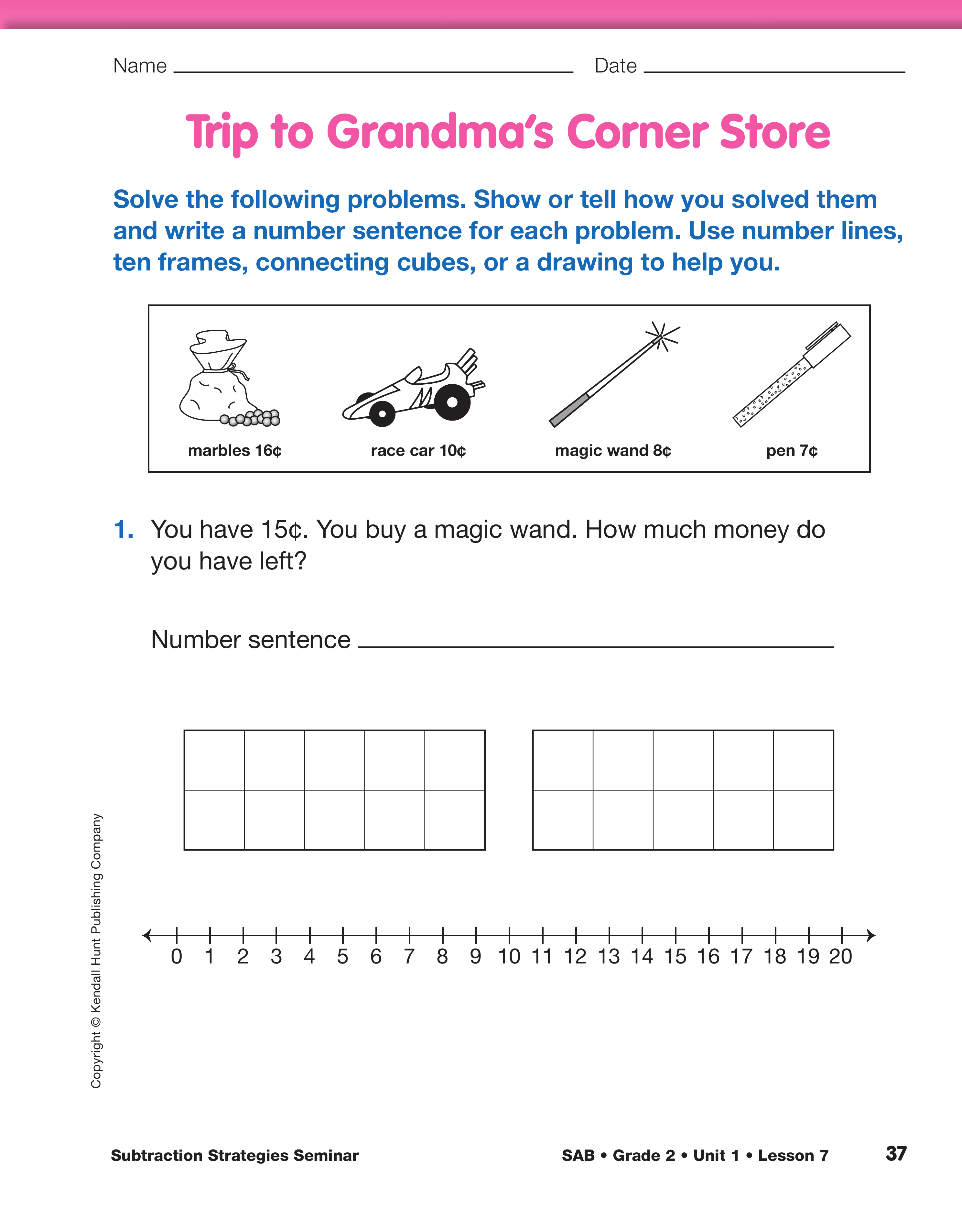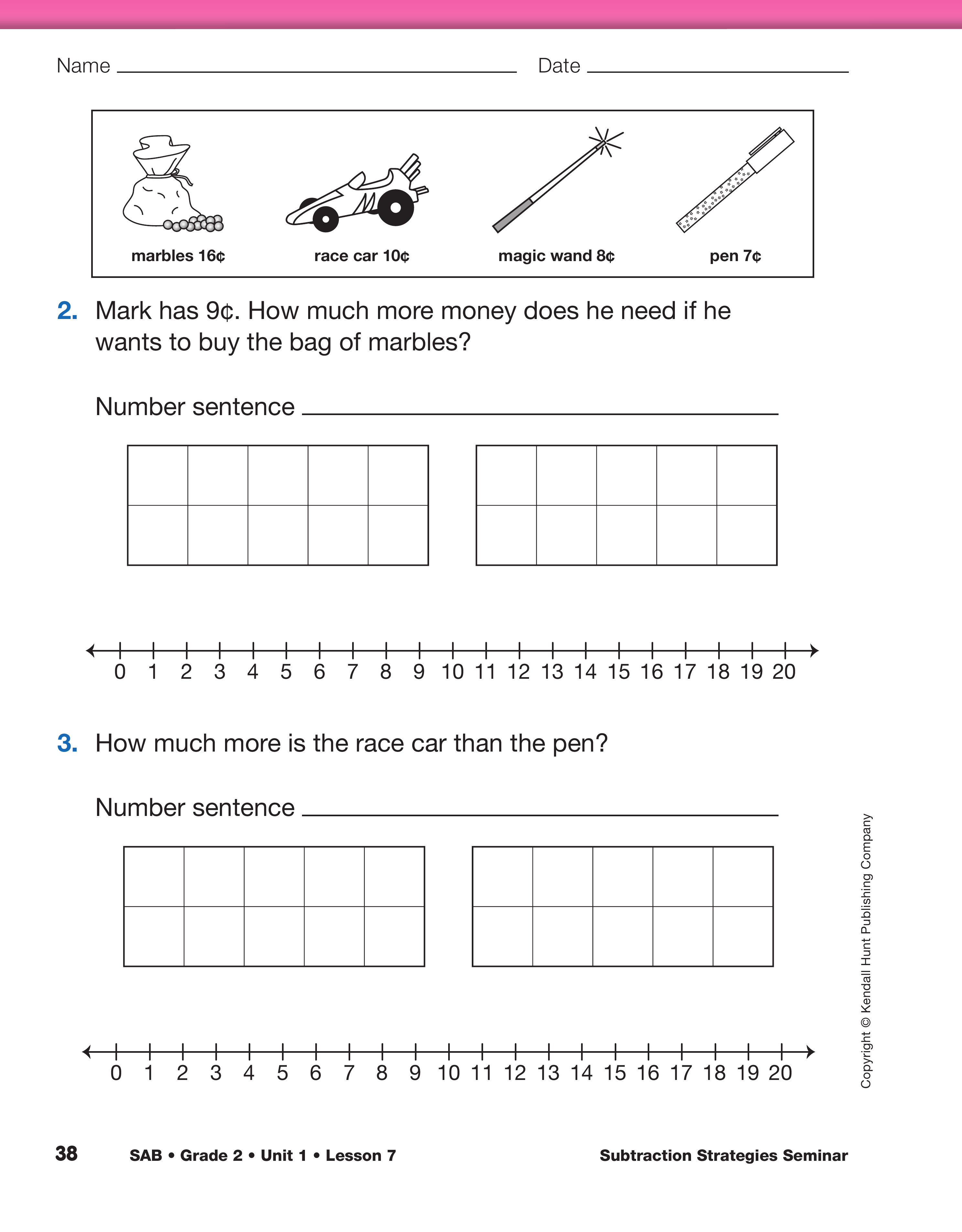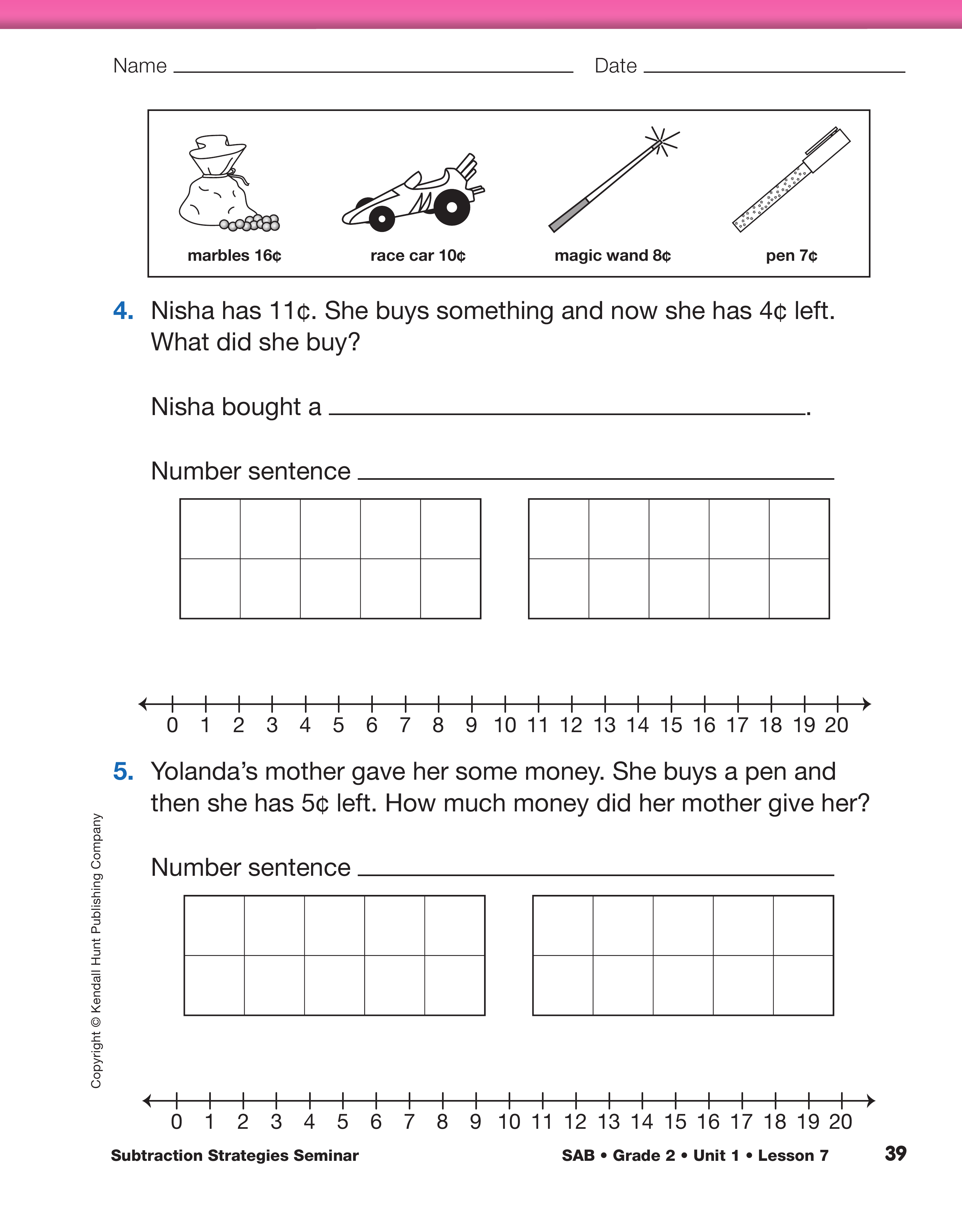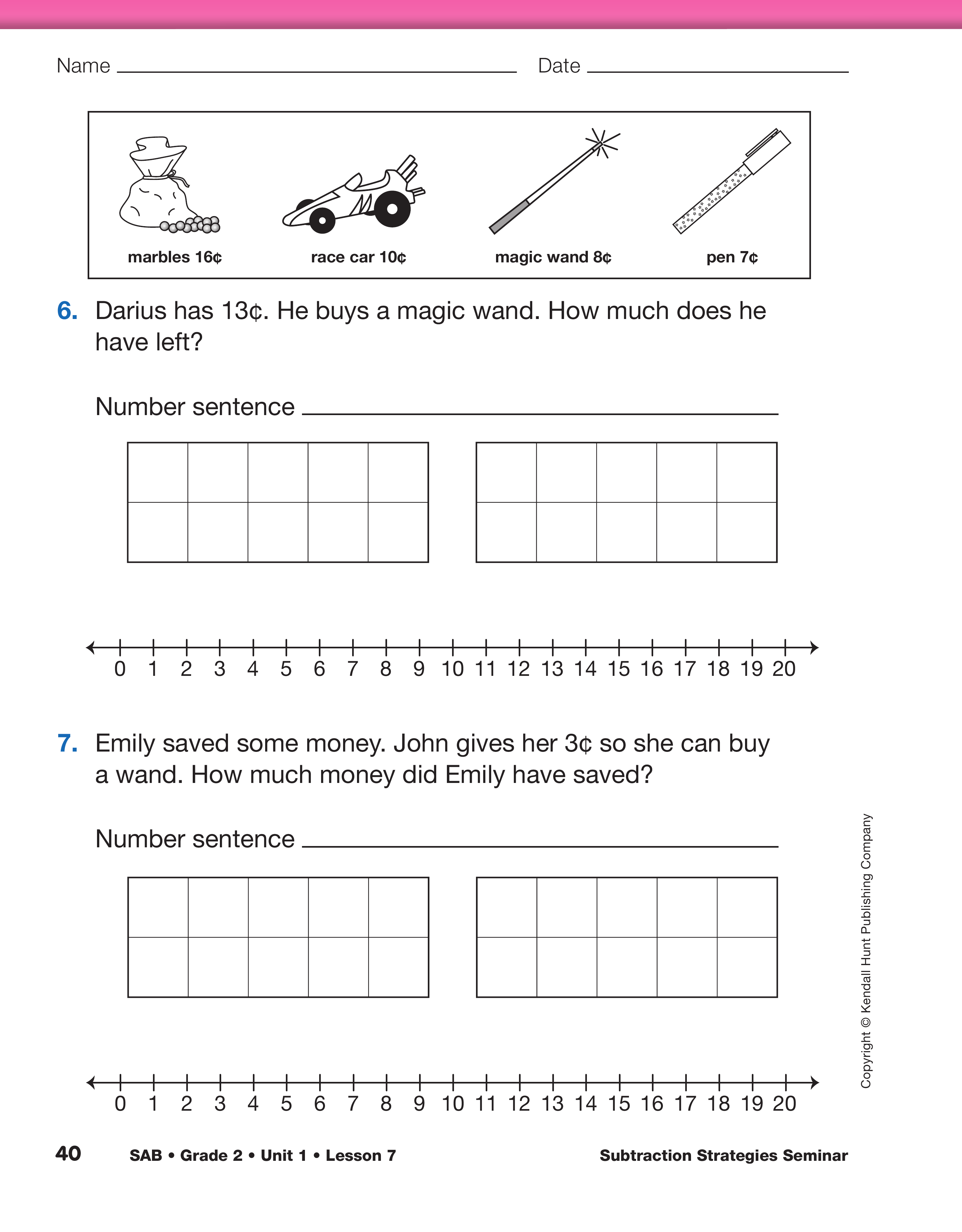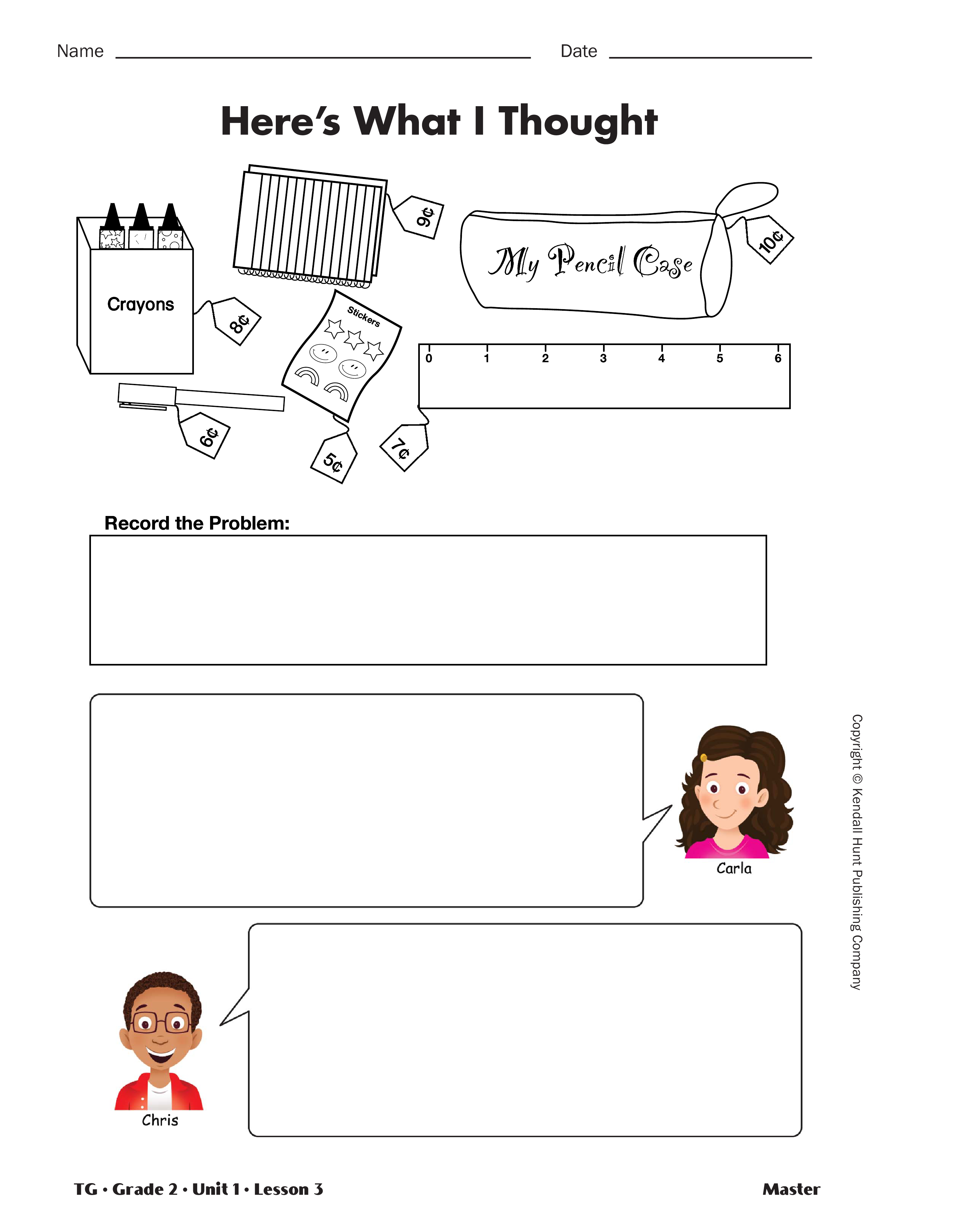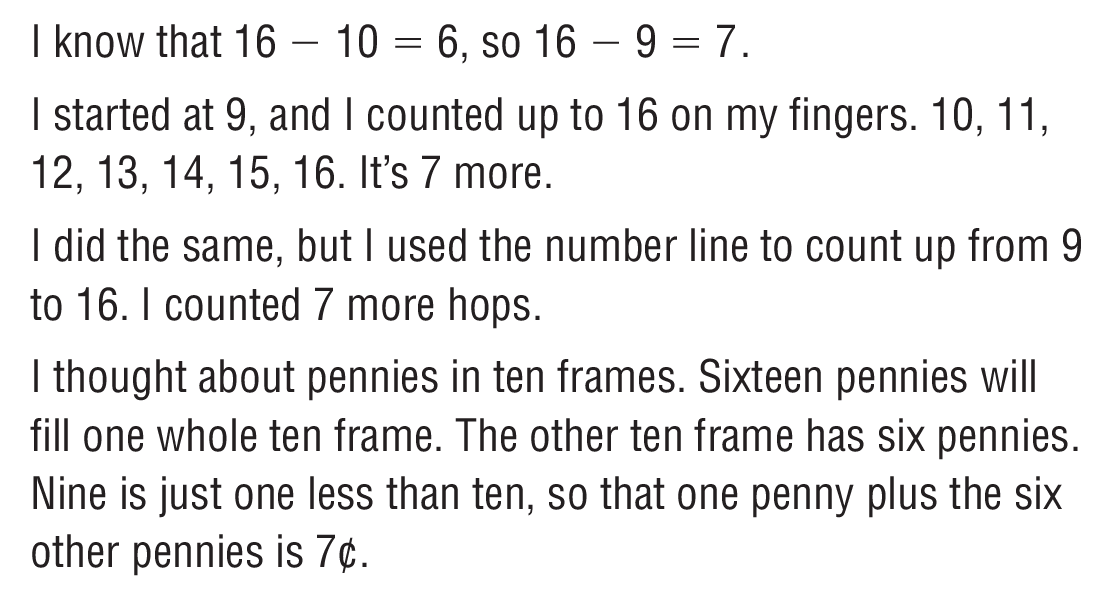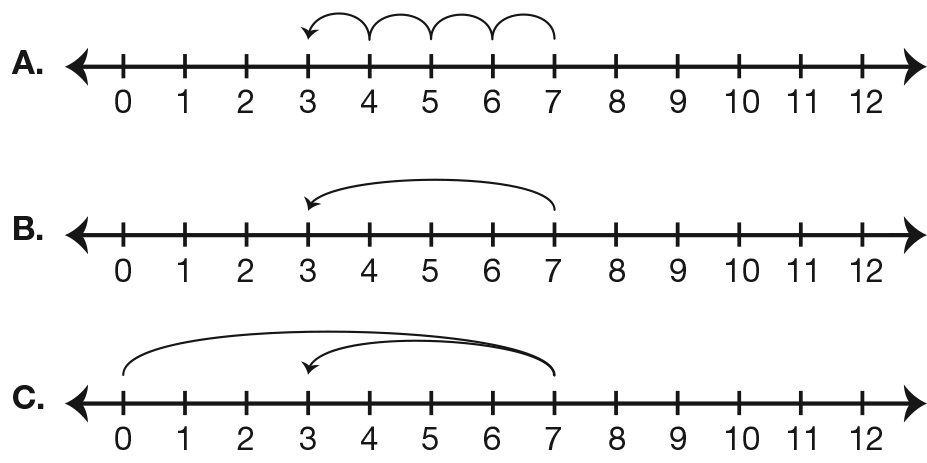Subtraction Strategies Seminar
Est. Class Sessions: 2Developing the Lesson
Part 2: Practicing Subtraction Strategies
Discuss Subtraction Strategies and Tools. Display the Here's What I Thought Master.
Point out the school store items and their prices.
Allow a few moments for students to think of a response to the question. Ask for different strategies and use the speech balloons to record the thinking of individual students. Identify the strategies by the names of the students volunteering them.
Encourage discussion of the different strategies by asking questions similar to the following:
Figure 6 shows some strategies that may be suggested for solving 16 − 9 = 7 (or 16 − = 9).
Tell students that they have 15¢ to spend. Ask them to choose an item to buy and then find out how much money they will have left over. Ask a volunteer to explain and record his or her problem in the box on the Here's What I Thought Master. Tell the rest of the class to solve the problem for themselves. Use prompts similar to those used in the 16 − 9 scenario to continue the "seminar."
Repeat the activity several times with different amounts of money to take to the class store.
Practice Strategies. After discussing students' subtraction strategies for finding differences, direct students' attention to the Trip to Grandma's Corner Store pages in the Student Activity Book. These pages provide students with the opportunity to solve different types of subtraction problems. See Mathematics in this Unit for a discussion of the problem types. Set the context for the pages by telling students the following story:
Linda liked to hear her grandmother tell stories about when her grandmother was a little girl.
Her grandmother told her that she saved her money so that she could go to a corner store that sold toys. She told Linda that the prices were very different from what they are now.
Show students a display of the Trip to Grandma's Corner Store page. Tell students that these are the prices that Linda's grandmother might have seen in the store window when she was a little girl. Ask students to pretend that they are going back in time to shop at Grandma's Corner Store. They work in pairs to solve the problems on the Trip to Grandma's Corner Store pages.
Ask student volunteers to display their solutions to the problems. Ask other students to look carefully at each solution and compare it with their own work. Encourage them to ask questions of the other students about strategies used and to offer their own strategies. As a class, discuss the solution strategies and whether the answers are reasonable.














